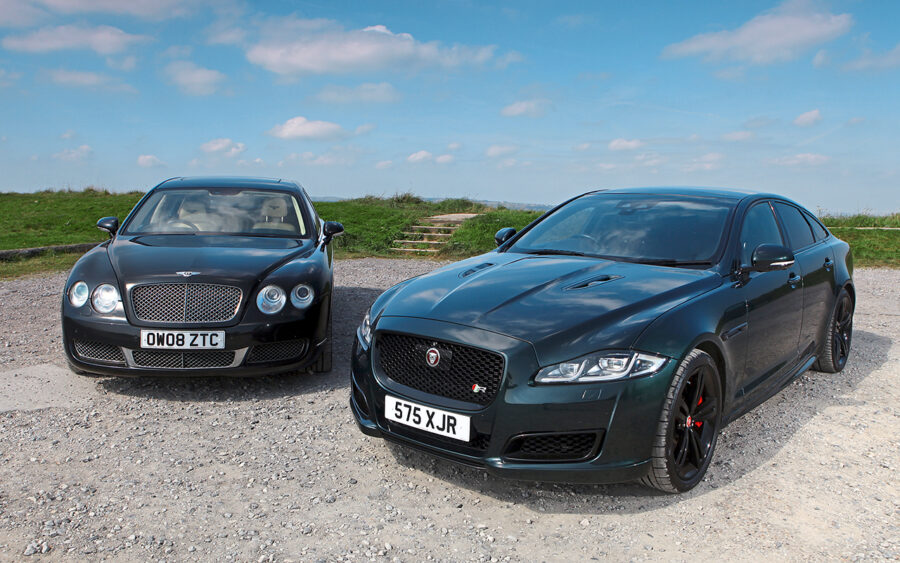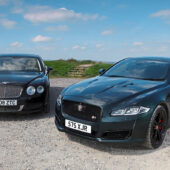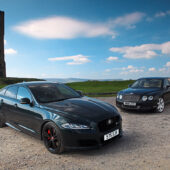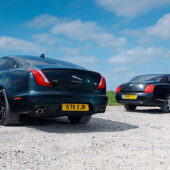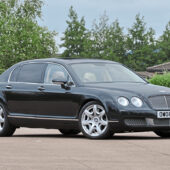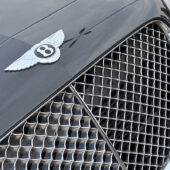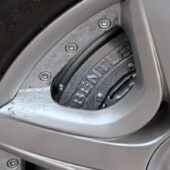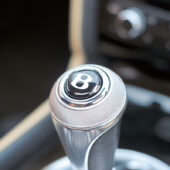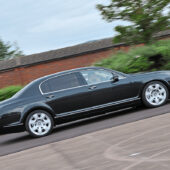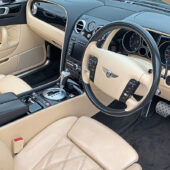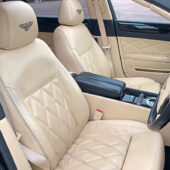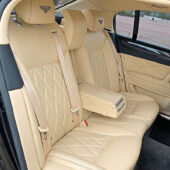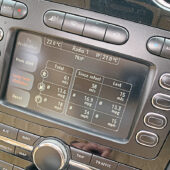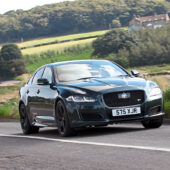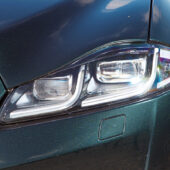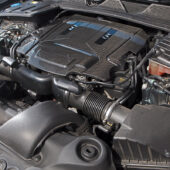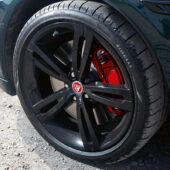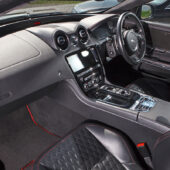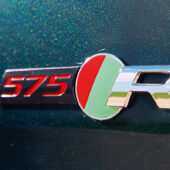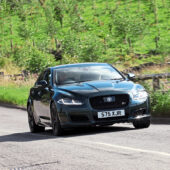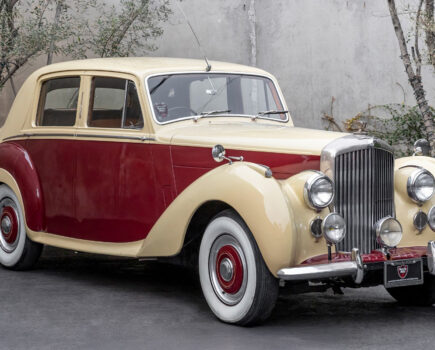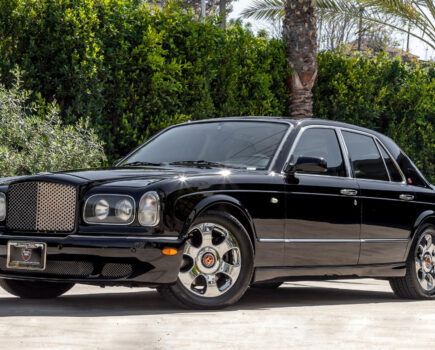We find out if the final-generation Jaguar XJ can challenge the pinnacle of early-2000s VW Group tech – the Bentley Continental Flying Spur
Words: Paul Wager Photography: Gerard Hughes, Paul Wager With thanks to: Craig Thompson
Throughout its life, the Jaguar XJ has always been something of a giant-killer, offering an often unbeatable package of pace, handling and refinement which was regularly the equal of cars costing far more. Indeed, once the XJ12 had been revealed, there were many who felt that Rolls-Royce – and by extension its badge-engineered Bentley sibling brand – was finally outclassed.
Amazingly, as Rolls and Bentley’s struggle to update its products saw it enter the 1980s with the Silver Spirit, which was essentially a rebodying of the 1965 Silver Shadow, the Series 3 incarnation of the Jaguar XJ – itself an ageing design by then – was still winning group tests in car magazines. In fact, CAR memorably decided that the ‘Best car in the world’ was in fact the luxury-spec Daimler iteration of the Jaguar saloon, and not Crewe’s finest.
That was perhaps a low point for the Crewe brands, starved of investment and increasingly propped up by the bizarre bespoke creations demanded by the Brunei royals, while Jaguar prospered under the command of John Egan as an independent, and then found new life as a Ford subsidiary.
By the turn of the new century, Ford money had seen Jaguar expand into the volume segment with the S-Type but had also seen the range-topping XJ take on a new credibility with its state-of-the-art V8 engine and much improved quality.
Over in Crewe meanwhile, things had taken a curious turn as Rolls-Royce Motors first embraced BMW to supply componentry for the Rolls-Royce Silver Seraph and Bentley Arnage, then ended up the subject of a bidding war which saw the entire company acquired by arch rival the Volkswagen Group.

To cut a long story short, strings were pulled on upmarket golf clubs and a no-doubt-furious Ferdinand Piëch discovered he hadn’t bought the rights to the Rolls-Royce trademark. Nor would the trademark owners sell them to the Wolfsburg brand, although a rather cosier relationship with BMW via the aero engine side of the business ensured that a deal was later done, which saw BMW taking the Rolls-Royce brand off to a new home in Sussex and Volkswagen concentrating on the Bentley brand at the Crewe site.
Naturally, VW claimed all along that the glittering prize it had really wanted was the Bentley brand with its greater volume potential, but the fact remained that it needed to get to work sharpish on a new range of cars. The agreement between the two German giants allowed the Crewe factory to produce both Rolls-Royce and Bentley vehicles until Jan 1, 2003, at which point only Bentley cars would be produced there – but the rather big catch was that the Bentleys of the day used BMW V8 power. To its credit, Volkswagen got stuck in, redesigned the Arnage to accept a newly updated version of the 1950s-era L-Series ‘six and three-quarters’ V8, and feverishly began work on an all-new Bentley.
For this, they had a head start in the shape of a car which had until then always been regarded as something of a curious folly, a pet project from the notoriously mercurial Dr Piëch: the VW Phaeton.
Looking for all the world like some kind of über-Passat, the Phaeton packed a four-wheel drive layout and a W12 engine which would later form the basis of the new Bentley, alongside the kind of detail engineering expected for a car of this price: one of the briefs which came from Piëch himself was that the air con should be capable of maintaining 22°C cabin temperature while cruising at 186mph in 50°C heat.
Taking the platform of the Phaeton, twin-turbocharging the 6-litre W12 engine and clothing it in a feline body sketched by Dirk van Braeckel and neatly recalling the R-Type Continental of the 1950s, the Wolfsburg/Crewe partnership worked something of a miracle. The result was a tremendously capable coupe which was a world away from BMW’s ultra-exclusive Rolls-Royces of the new era.

Intriguingly, although the Continental GT announced in March 2003 was a pricey car at £110,000, it was almost half the cost of the outgoing model, which explains why over 3000 deposits were taken before production even began.
As launched, the two-door Continental GT boasted 550bhp and 480lb ft, translating to a top speed of 198mph and 0-60mph in 4.8 seconds, seating four adults in an interior which boasted all the handcrafted appeal of the older cars but with the precision and quality of a modern premium car.
In 2005 the GT would be joined by a four-door version, the Flying Spur, as well as the convertible GTC, while in 2008 the 603bhp Speed joined the range. A major facelift arrived in 2011 with a V8 engine option, while an all-new third generation was unveiled in 2018.
It’s the Flying Spur we have here, a 2008 example which was in showrooms at the same time as the X351-generation of Jaguar XJ, a car which was equally significant both for the motoring landscape and its maker. Not only would it be – as we would discover only much later – the final evolution of the long-running XJ line, but it represented a new direction for Jaguar alongside the equally sharply styled XF as it entered a new future under Tata control.
The 2008 XF had shocked the world with its starkly modern shape but in the interests of volume sales, the stylists’ more fanciful excesses had been toned down. With the smaller-volume XJ however, Jaguar could afford to be more adventurous; when it was unveiled in 2009, it was a revelation.
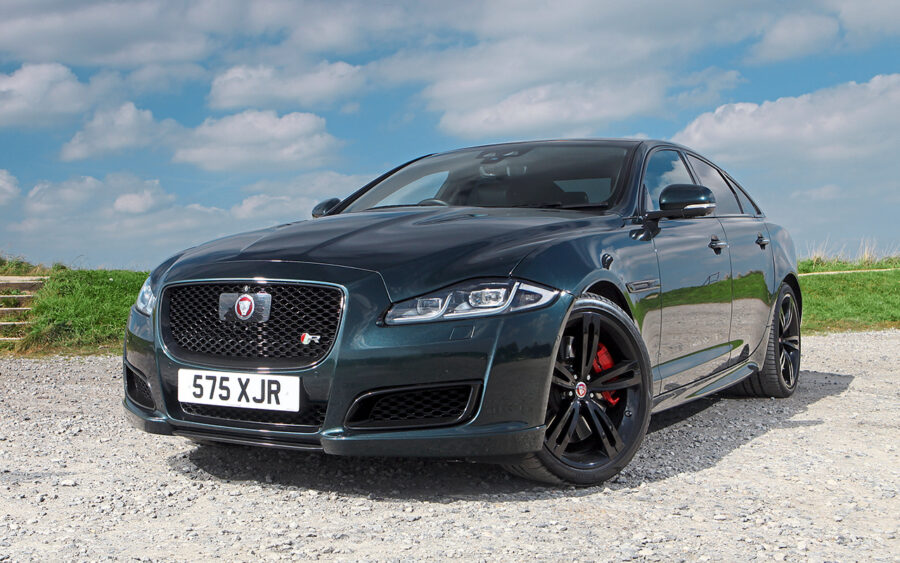
Never mind that the new Jaguar XJ was essentially based on the platform underpinning the previous generation, here was a car which looked as stunningly modern as its predecessor was self-consciously retro.
As Nick Hull explains in his book Jaguar Design, the X351 represented a deliberate move away from the staid executive limousine style of the older cars to compete with sharper-looking rivals like the Audi A8 and Maserati Quattroporte.
The low roofline and slim glasshouse was a deliberate attempt to follow a coupe style rather than the traditional three-box design and it made the Jaguar unique in this market. “The front says ‘look at me’. And from the rear it says ‘You won’t forget me'” was a notable quote from its designer, Ian Callum.
Not every Jaguar tradition was ditched, though: the rear haunches were subtly integrated into the rear three-quarter, while the imposing grille was inspired by the Series 1 XJ. Impressively, the finished car offered a drag coefficient of 0.29.
If the exterior was bold, the interior was in many ways more startling: a step change recalling the early XJ-S cabin and a departure from what had gone before.
Resisting the popular trend at the time towards Apple-style minimalism, the team recognised that buyers of cars like this wanted an interior which was engaging and characterful. Which was most certainly what they got: a twin-cockpit theme like a vintage speedboat saw a sweeping console creating a driving position akin to a sports car, with a vast array of material choices allowing customers to create the theme they wanted.
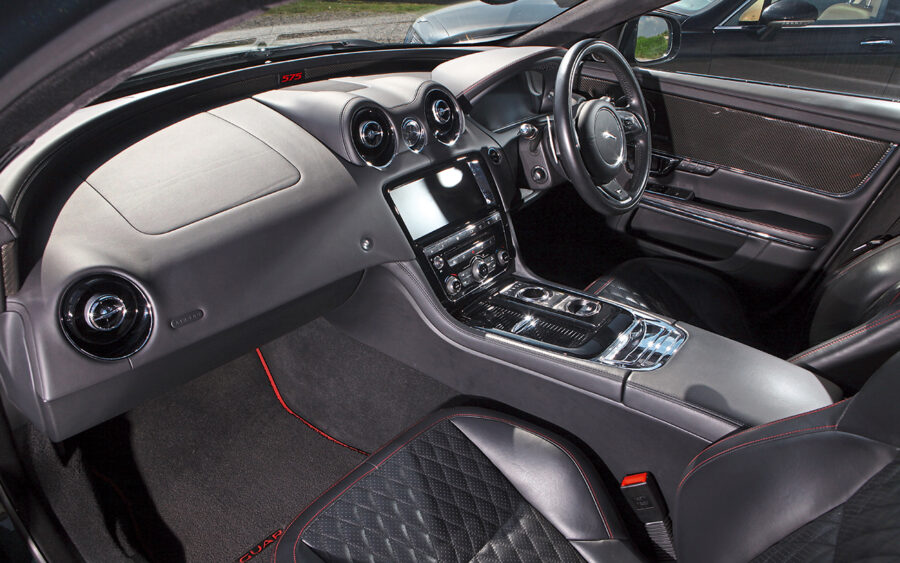
Set into this was a raft of high-tech which made the Bentley’s 2003-era cabin look dated: digital ‘virtual’ gauges, vodka-bar mood lighting and a central touch screen with the ability to display entertainment to the passenger and driving information to the driver simultaneously.
The XJ entered production in 2010 and was offered with a choice of powerplants not available with the Bentley: the 3.0-litre twin-turbo V6 diesel which would naturally become the bigger seller, the 3.0-litre petrol V6 and the 5.0-litre V8. This latter was supercharged from 2013 to become the XJR, in which form it was good for 543bhp – only slightly shy of the Bentley W12’s 550bhp and in a car with a decided weight advantage.
The question of why in those pre-Dieselgate days Bentley didn’t raid the shelves for Audi’s mighty V10 diesel has never been answered, but we can safely assume the answer to lie in the arcane craft of brand positioning and a world where an oil-burning Bentley just wasn’t acceptable, no matter how good the economy. The brand has more recently turned to the slightly tenuous idea of hybrid powertrains – and did briefly produce a diesel version of its Bentayga SUV – but back at launch the smooth diesel option made the XJ more competitive in the market than it had ever been.
Clearly though, the run-of-the-mill XJ – splendid though it was – couldn’t quite be considered in the same breath as the £117,500 Bentley. However, as time went on, the range-topping Jaguars gained more power and a heftier sticker price, culminating in the car we have here: the XJR575, courtesy of owner Craig Thompson, serial Jaguar owner.
The name references the metric horsepower output of the supercharged 5-litre V8, which is a W12-beating 575PS – or 567bhp in proper money, which is close enough to make it a direct competitor. When it was announced back in 2018, this iron fist in a velvet glove retailed at £93,710, and although that’s some way short of the contemporary Flying Spur’s £130,000-odd, there must have been more than a few buyers wanting a brutally quick yet spacious saloon who had both cars on their radar. Back in 2011 when the Flying Spur and X351 were first available at the same time, the Bentley retailed at £117,500, with Jaguar’s range-topping long-wheelbase XJ Supersport at £94,000. Closer than you might think.

At first glance this pair might seem broadly similar: two air-suspended five-metre-long saloons crammed with tech and channelling over 500bhp through an automatic box and both making an imposing statement, the major differences being the Bentley’s all-wheel drive and the aluminium Jaguar’s weight advantage. Spend time with them, however, and it becomes obvious that here are two very different beasts indeed.
First, the Bentley. There’s no denying that it’s a tremendous feast of technology, especially the twin-turbo W12 engine which provides the 479lb ft torque needed to shove this 2.5-tonne behemoth firmly on its way. Driving through the six-speed ZF 6HP automatic, it gives the Spur startling pace despite its bulk, but it’s a busy-sounding unit and can be intrusive at times in a way which feels out of place in a car like this.
At idle there’s a muted but ever-present throb which signals the car’s ferocious potential, and although it’s refined enough in sedate driving, it’s vocal when asked to deliver. At this point the exhaust note deepens, noise levels rise noticeably and the big Bentley really picks up its skirts – after a slight delay, that is, while the gearbox decides what to do. There’s a sport mode in the Continental which sharpens it up a touch but the shift paddles – mounted inconveniently on the dash rather than the wheel – are worse than useless. The delay in picking up the next gear is laughable, while the system defaults back to the automatic mode within just a few seconds.
Worst of all, the paddles are positioned where you expect to find the indicator stalk, meaning even after plenty of miles in the car you still tend to flick the wrong control.
Like the XJ, the Continental is air-suspended and also like the XJ, this Mulliner Driving Specification car rolls on 20-inch wheels. The considerable heft of the car is never far from mind, and although the damping can be adjusted via the control screen from comfort to sporting, it’s a pretty firm setup and tends to thump through potholes even on its softest setting. One handy trick Bentley offers is the option to raise the suspension Citroën-style, which comes in handy more often than you might think in daily life.

As for the sports side of the sports saloon equation, it’s fair to say the Flying Spur can indeed fly when it’s asked, although sweeping A-roads are its forte rather than country lanes, due largely to its bulk and sheer weight.
The all-wheel drive does help it move off the line with an impressive shove and with no need for electronic intervention, even under full-bore starts. When asked to tackle tighter turns it feels more like the drivetrain in Audi’s 1990s quattro saloons, with a ponderous turn-in and a tendency to initial understeer; this tends to make it feel less capable than it perhaps is. But at the end of the day, this is a big machine and you can’t defeat the laws of physics.
So, a commendable showing for something this big. But how does the Jaguar compare? Really very well indeed, you’ll be pleased to hear. In 575 form, the Jaguar’s 600kg weight advantage means its superiority in a straight line will surprise nobody: the 0-60 benchmark is despatched in just 4.4 seconds, which leaves even the mighty W12 coughing in its wake as it arrives over a second later.
Impressively, the Jaguar V8 manages this in relative silence compared to the Bentley, certainly from inside the car. With the sport mode active the exhaust note is more muscle car than executive saloon, but inside Craig’s XJ, there’s a distant supercharger whine – and nothing else remarkable save for the G-forces pushing you firmly back in the seat. That Jaguar managed to marry this kind of pace with top-notch refinement is truly impressive, the more so when you realise that the 20-inch wheels are pattering far more serenely than the Bentley over the same stretch of broken tarmac.
Like the Bentley, the XJ uses a conventional torque converter automatic – a derivative of the same ZF 6HP unit in fact – but post-2013 models gained the eight-speed 8HP box. Not only did this provide the extra pair of ratios, but a reduction in shift time to 200 milliseconds – marketed by Jaguar as ‘Quickshift’ – and the ability to shift non-sequentially when required.
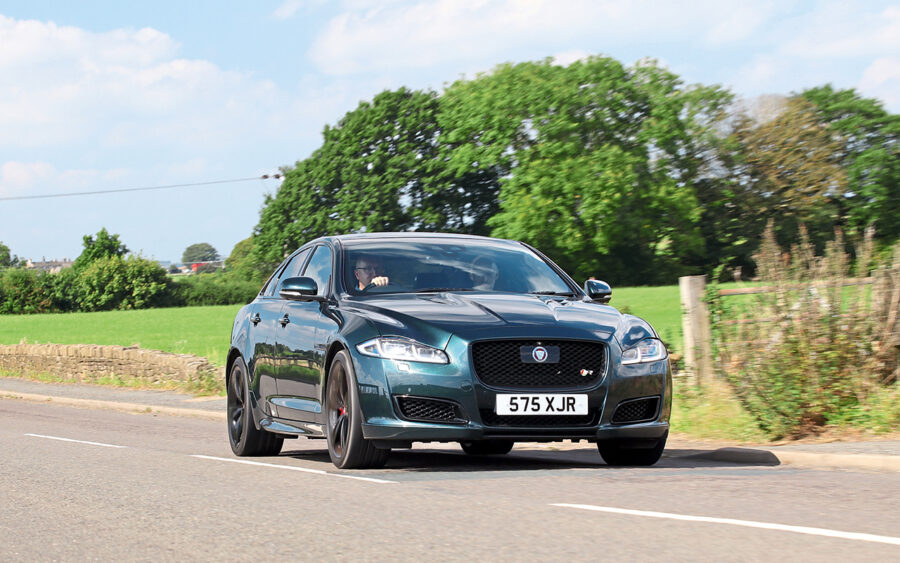
Nobody knows how the black magic of an automatic gearbox works of course, but the result is that the XJ simply doesn’t need the thinking time of the Bentley when the driver calls down to the engine room, responding as quickly in practice as a modern dual-clutch box. And before you accuse us of not comparing like with like, the same is largely true with the earlier six-speed XJ.
Having driven some 150 miles to the photo shoot in the Bentley, jumping into Craig’s XJR was like leaping into a different era, despite the two models being on sale at the same time. Craig’s taken the mileage from 18,000 to over 40,000 during his ownership and so has plenty of experience to draw on, reporting that on longer journeys the car is a supremely relaxed way to travel, despite having that colossal performance just an ankle twitch away.
It’s also a lot easier to live with in another very practical sense, too: the Bentley might just squeak up to 20mpg on a gentle motorway run but for the most part you’re staring in the face of an XJ-S-like 15mpg, whereas Craig reckons he regularly sees over 30mpg from his XJR.
Bentley diehards would point to the whole ownership experience, directing you to the opulence of the hand-crafted interior and the old-school luxury ambience. All of which is sort of true, but rather let down by the VW-derived switchgear in places. Sure, by adding slivers of knurled aluminium here and there, Bentley did a rather better job of disguising Audi switches and VW vents than Aston Martin ever managed with the Escort bits inside the DB7, but in truth it actually feels more mass-market than the Jaguar.
By contrast, an up-spec X351 always feels like a genuinely special place to be, partly because Jaguar’s designers didn’t feel obliged to make a nod to tradition and so were able to create a car which offers a very modern type of luxury and it leaves the Flying Spur looking a touch old-fashioned.
This comment rather neatly brings us to a conclusion: the Bentley is of the old school whereas the X351 XJ – even 13 years on from launch – still feels fresh and new. The winner is the Jaguar and by some distance, too. Not because the Bentley isn’t any good – but because the final XJ is just so very good indeed.

